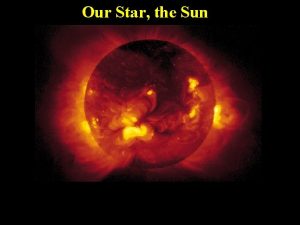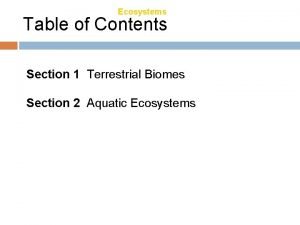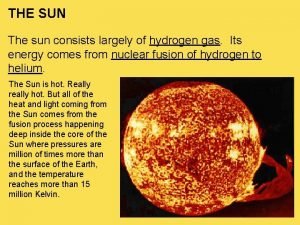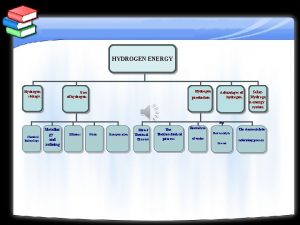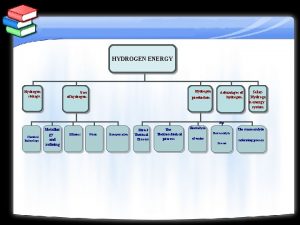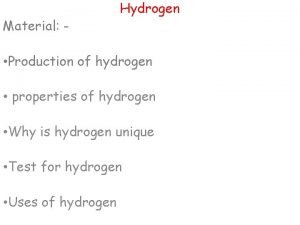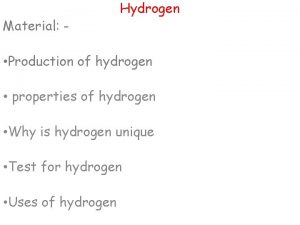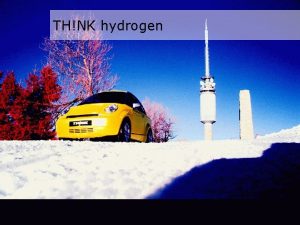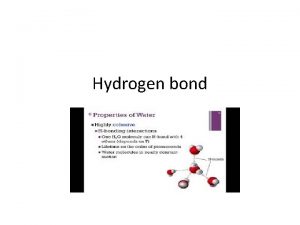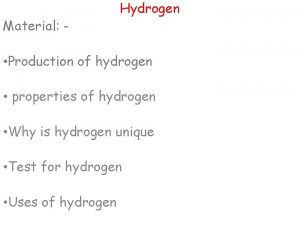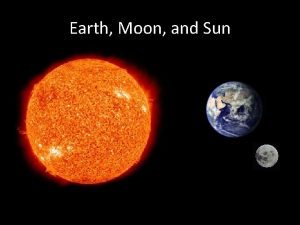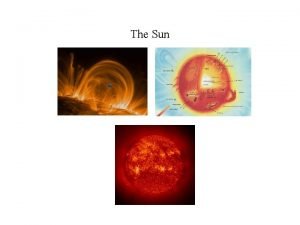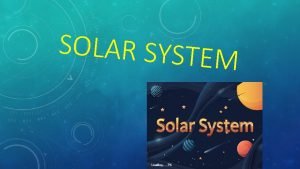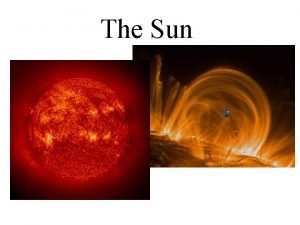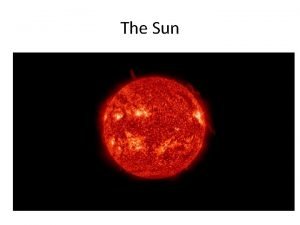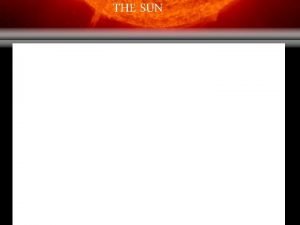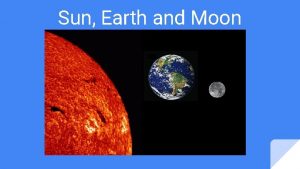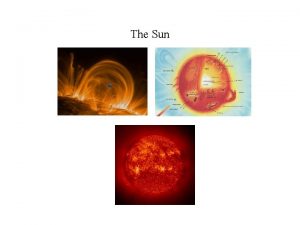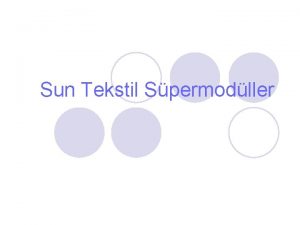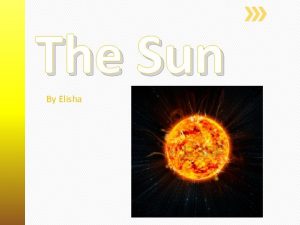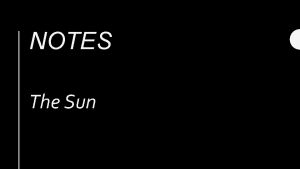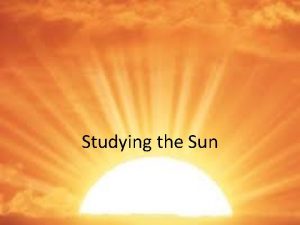THE SUN The sun consists largely of hydrogen




















- Slides: 20

THE SUN The sun consists largely of hydrogen gas. Its energy comes from nuclear fusion of hydrogen to helium. The Sun is hot. Really really hot. But all of the heat and light coming from the Sun comes from the fusion process happening deep inside the core of the Sun where pressures are million of times more than the surface of the Earth, and the temperature reaches more than 15 million Kelvin.

The earth is tilted 23½ º 24 hour daylight and 24 hour darkness

WHAT CAUSES SEASONS? Earth’s tilt causes seasons

Earth revolves around the sun tilted on its axis. The angle at which the sun’s rays strike each part of Earth’s surface changes as Earth moves through its orbit.

SOLSTICES 1. Summer Solstice---sun shines the longest on this day…occurs June 22 in the northern hemisphere 2. Winter Solstice---shortest amount of sunlight on this day…occurs December 22 in the northern hemisphere SUMMER WINTER

EQUINOXES 12 hours of daylight and 12 hours of darkness on equinox days 1. Spring equinox occurs on March 21 st in the northern hemisphere 2. Fall equinox occurs on September 21 st in the northern hemisphere

THE SUN • The largest object in the solar system, in both size and mass • Contains 99% of all the mass in the solar system…made up of hydrogen and helium • 109 Earths lined up edge to fit across the Sun • Nothing “solid” about the sun… its interior is plasma —the 4 th state of matter…solid, liquid, gas, plasma (ionized gas)

Layers of the Sun 1. Photosphere is the visible surface of the Sun 2. Chromosphere is only visible during a solar eclipse or with special filters…appears as a red circle around the sun during the eclipse


3. Corona is only visible during a solar eclipse or with special filters…appears as white glow that extends several million miles into space

The Sun’s Activity 1. Solar Wind is an energized gas that flows out from the corona at high speeds. The solar wind is deflected by the earth’s magnetic field, however this is what causes the northern and southern lights.

2. Sunspots are cooler areas on the photosphere that last for about 2 months

3. Solar Flares are violent eruptions or solar particles and radiation 4. Prominences are an arc of gas that is ejected from the chromosphere and rains back to the surface SOLAR FLARE SOLAR PROMINENCE

Sunspots Flare Prominence Solar Wind

Comets: orbit the sun and consist mostly of frozen gases which vaporize in sunlight forming an atmosphere and sometimes a tail—the tail always points away from the sun.

A meteoroid is debris located outside of Earth’s atmosphere that orbits the sun. • A meteor is debris located within Earth’s atmosphere that vaporizes…known as a shooting star. • A meteorite is a meteoroid that survives its passage through Earth’s atmosphere and hits Earth’s surface.


Asteroids are usually leftover debris of the formation of the solar system. They orbit the sun between Mars and Jupiter in the asteroid belt which separates the 2 types of planets.

AMAZING EARTH SCIENCE FACTS Summer 1. ______ Solstice is June 21 st (longest day). Winter 2. ______ Solstice is December 21 st (shortest day) Equinoxes 3. ______ occur when the sun is directly over the equator…. Spring is March 21 st and Fall is September 22 nd. (12 hours of daylight and 12 hours of night) 4. The sun is a star that is made up of the 2 gases hydrogen and helium ______. AU is the distance from the sun to the earth… 93 5. One _____ million miles.

 Sun surface temperature
Sun surface temperature An area of land largely enclosed by higher land
An area of land largely enclosed by higher land High rocky land usually with steep sides
High rocky land usually with steep sides Policies largely dictate how structure will be established
Policies largely dictate how structure will be established A cold and largely treeless biome
A cold and largely treeless biome Strategy analysis and choice largely involves making
Strategy analysis and choice largely involves making Sun consists of
Sun consists of Các số nguyên tố
Các số nguyên tố đặc điểm cơ thể của người tối cổ
đặc điểm cơ thể của người tối cổ Tỉ lệ cơ thể trẻ em
Tỉ lệ cơ thể trẻ em Phối cảnh
Phối cảnh Các châu lục và đại dương trên thế giới
Các châu lục và đại dương trên thế giới Thế nào là hệ số cao nhất
Thế nào là hệ số cao nhất ưu thế lai là gì
ưu thế lai là gì Hệ hô hấp
Hệ hô hấp Môn thể thao bắt đầu bằng từ đua
Môn thể thao bắt đầu bằng từ đua Tư thế ngồi viết
Tư thế ngồi viết Hình ảnh bộ gõ cơ thể búng tay
Hình ảnh bộ gõ cơ thể búng tay Cái miệng xinh xinh thế chỉ nói điều hay thôi
Cái miệng xinh xinh thế chỉ nói điều hay thôi Cách giải mật thư tọa độ
Cách giải mật thư tọa độ Tư thế ngồi viết
Tư thế ngồi viết
